From the Beginning
The information in this brief history is taken from various documents, texts and publications obtained from Mallorca. No part of this history is based on the opinions of the CCCC; it is simply resource material obtained from the above mentioned sources and stitched together to compile an accurate history based on the facts.

The birthplace of the Cursillo Movement is Mallorca, the largest of the Balearic Islands, situated east of mainland Spain, in the Mediterranean Sea. Palma de Mallorca, the island’s capital, is a cosmopolitan city, destination for thousands of tourists from all over Europe. They come to enjoy the spectacular scenery of rocky coastlines, quiet inlets, mountains, sandy beaches, and peaceful valleys.
History shows that this beautiful island was occupied first by the Romans, then for four centuries by the Moors of North Africa, re-conquered by the Spaniards and then the French. It eventually became an independent kingdom, with its own language, Mallorquin, which has its roots in French and Catalan. Today it is a part of Spain.
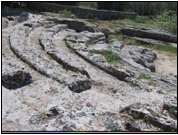
During the occupation by the Moors, Christianity was forced underground and Islam became the religion of the island. Many statues of the Blessed Mother were buried for the duration of the occupation, being rediscovered four hundred years later when the people reverted to Christianity and the Moors were defeated and driven out. In the 1930s, the leftist Republican government of Spain attempted to introduce atheism into all aspects of Spanish life, especially the education system.
But Christianity lives within the Mallorcan soul, and like the ancient olive trees that grow in the seemingly barren soil of the island, the faith of the people is deeply rooted in the Gospel.

The Spanish Civil war affected mainland Spain to a much greater degree. However, the 1930s brought depression and bloodshed even to Mallorca. The events that took place and their effects on society ignited a burning passion in many of the Spanish youth, and they responded to a call from the pope to begin a crusade declaring Christ as Saviour.
In an attempt to show the world that faith was alive in Spain, thousands of youth were organized into a spiritual army that was destined to make a great pilgrimage to Santiago de Compostela, the ancient shrine of St James the Apostle, in northern Spain. From this tiny island of Mallorca, 600 young people joined the pilgrimage, which eventually took place in 1948.

The organization of the pilgrimage was undertaken by Catholic Action, created in Italy by Pope Pius XI, and which had later spread to Spain. It operated at the diocesan and national levels and its sole purpose was to take 100,000 youths to Santiago on the pilgrimage. The method entailed training leaders in what was known as ‘Cursillos for Pilgrim Leaders’, at the diocesan level, and ‘Cursillos for Pilgrim Guides’, at the parish level. Catholic Action cursillos (short courses) had the specific purpose of preparing, spiritually and materially, for the pilgrimage to Santiago. They were focused exclusively towards the wealthy young men from the upper classes, students of the schools and colleges run by the great religious orders who already belonged to Catholic Action. Each ‘cursillo’ lasted for an entire week.
But in the dark days following the civil war, there were many people who seemed blind and deaf. They needed to hear a different message proclaimed in a different way.
The Holy Spirit devised a new method, a new way, so that the Good News would reach people in a direct and personal manner, reaching each within their own community. The Spirit chose ‘one’ from among them and infused in him the Charism of Cursillo. He would become an instrument who would share the Good News with everyone, but especially with those who were far from God and His church.
During Holy Week of 1943, this young man of Mallorca was approaching his 25th birthday. For the previous five years he had been in the army, doing his mandatory military service, which ultimately lasted for nine years. Eduardo grew up in a devout Catholic family and his environment consisted solely of friends and acquaintances who were practising Catholics, young men from the middle and rural classes. These young people spent their leisure time enjoying activities that revolved around the parochial world of the clergy and under the ideology of Catholic Action.
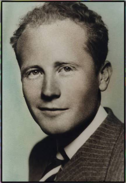
We know this young man as Eduardo Bonnin. Something about Eduardo was different. He was and remained a deep thinker and avid reader. He was greatly influenced by the writings of the current and popular authors of that time. Although driven by a constant obsession to satisfy his religious yearning, he undertook his journey at the level of his personal freedom.
His experiences in the military gave him the opportunity to discover another social class. Every day he had to face the living reality of those with whom he shared the barracks, and he realized that their lives were very different from the lives of his Catholic family and friends, those he was used to and with whom he had shared many experiences.
The diocesan president of the Mallorca branch of Catholic Action knew Eduardo and recognized in him someone he considered to be a prime candidate for leadership in Catholic Action. He invited Eduardo to the second ‘cursillo’ for Pilgrim Leaders that was to take place at the monastery of Lluc during Holy Week of 1943. Eduardo, who the leaders sensed, was an independent and free spirit, accepted the invitation.
From what he saw, and what he heard that week, he extracted those ideas and concepts that he felt he could apply and use to satisfy the restlessness that disturbed him. He wanted to find a way to take the reality of Christian life to the real environments, those environments where the young men of the barracks lived. Besides preparing for the pilgrimage, he felt that the ideal thing would be to find a similar way to interest people in the other pilgrimage, the pilgrimage towards the Father, which all of life is, and to do it in such a way so as to ensure that the message would also reach, in fact reach mainly those, who were not, or did not think that they were Christians, the ‘far away’.
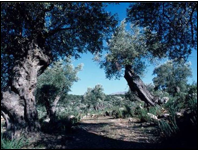
The living Christ of the Gospel became Eduardo’s ‘north star’, his constant motivation and his guide. Following the plan of the Holy Spirit he studied the environments, outlined the method to his young acquaintances. From then on, they began to win friends, writing the Good News on the hearts of those they came in contact with. He outlined his thinking in a paper which he named The Study of the Environment, which, being properly understood, is known in Mallorca as the dorsal fin of the Cursillo Movement, the rudder.
The Study of the Environment took shape and form as a rollo when it was presented by Eduardo in the diocesan seminary of Mallorca on the feast of the Immaculate Conception, December 8th, 1943. It was a moment of Grace, a moment of the Charism. Through the Power of the Holy Spirit, what became known throughout the entire world as the Cursillo Movement, had just begun.
The breath of the Spirit touched Eduardo early in his life, impregnating his soul with the Good News of a close and a living Christ, who loves us in the normality of our lives. He was then, and still called himself to the end of his life, an apprentice Christian; filled with faith, touched by the Holy Spirit. After many years of reading and meditation, consultation and prayers, the Ideal of his life was to share with as many as possible that God loves us. For him, it was especially important to reach those ‘far away’, inviting them to live in Grace by means of one method.
That method, the method of Cursillo, is Friendship.
Eduardo dedicated all his time to study, and as the Gospel says, he left the ninety-nine saints to go after the ‘others’: To win them, not for Santiago and the pilgrimage, but for Christ and His life.
Eduardo shared his ideas with some of the young people from Catholic Action; Ferragut, Font, Rullan, Moncada and Riutort and they too became infected with this new method. Together they decided to put it into practice.
With fourteen candidates, the very first Cursillo weekend in history was held, not in a grand monastery but in a small chalet named ‘Mar y Pins’, situated on a rocky bluff, between the sea and the pines. The small town where the chalet is located, is called Cala Figuera de Santanyi. In 1944, it was a small fishing village, in the south east corner of Mallorca, rich in natural beauty, situated as it is on a rocky inlet from the sea and surrounded by the pine trees that grow across the island.
In his own words, Bonnin says: “All of the structure of what is today a ‘Cursillo in Christianity’ was forged in the weeks leading up to the Cursillo at Cala Figuera. We used a good number of the organizing techniques from the preceding ‘cursillos’ for Pilgrim Leaders and Guides but we modified all those which seemed unsuitable or not useful for people without faith. We shortened the duration to three days, added the first night of retreat, and for the rollos, we incorporated a few of the ideas, keeping the names of some of them, Piety, Study, Action, and Leaders.”
He reshaped every talk given by laymen to adapt them to the thinking of non-believers and to align them with the principles of Study of the Environment.”
He says: “We provided the priests who were willing to help us with outlines on the subject of Grace, from the Catholic Action cursillos.”
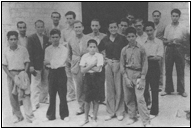
On August 20 to 23, in 1944, Eduardo Bonnin, as rector, and Jose Ferragut and Jaime Riutort as leaders, presented the message using the same rollos that are still given today in Mallorca, to this group of fourteen young men. They were aged between 13 and 28 years. The Spirit was present during those days in Cala Figuera. From that point on, with simplicity and the power of the mustard seed, the method, the essence and purpose of the Cursillo Movement, born from the spirit of pilgrimage and structured by Eduardo Bonnin, spread throughout the entire world, acquiring a universal reality. This history is not being shared by Mallorca from a desire to boast, but merely to state that the truth is the truth. It is about holding high the light of the first 60 years of the Cursillo, which has illuminated Christianity in all corners of the world, where it has shouted the Good News, being all things for all people, sharing freely what has been freely received.

With the help and spiritual guidance of priests like bishop Juan Hervás, Juan Julia, Juan Capo, Sebastian Gaya, Cesario Gil, and many others, it has reached all five continents of the world.
Fr. Antonio Perez, the Spiritual Advisor for the Mallorcan Cursillo Movement, has this to say:
- The authentic Cursillo Movement was born in Mallorca in 1944.
- Cursillo is a Lay Movement.
- In its structure as a Lay Association, it meets the requirements of the Church.
- The Foundational Charism is structured by the foundational ideas as they were explained in the 1 Conversations of Cala Figuera in 1994.
- Fundamental Christianity is not only a doctrine, but a reality that has to be lived in connection with life itself.
- To be Christian is to feel loved and to allow God to love in return, being astonished by this fact on a daily basis.
- The message of Cursillo, while always open to possibilities, has as its priority to look for those ‘furthest away’.
This is an accounting of how the Cursillo was born and this is what it really is. It is based on one objective which its founder, Eduardo Bonnin, expresses in this way.”The objective of the Cursillo Movement consists in facilitating people to encounter Christ, and to let this encounter grow, developing it through living in Grace in a conscious, deep, and contagious way. Cursillo is the best news that God loves us, shared by the most human of all means, friendship, directed towards the best thing that each person possesses, himself or herself.”
Between 1944 and 1948 , five other Cursillos were held and by the Grace of God, enjoyed similar success. Eduardo asks the question (of those who would disagree): “Why is it, then, that the Cursillo held in San Honorato Monastery from January 7th to 10th, in 1949, is usually referred to as the first Cursillo?”

Here he explains. “In 1947, Bishop Juan Hervás, was appointed co-adjutor bishop of Mallorca. Up to that point in time his pastoral experience had been focused mainly on Catholic Action. He very soon became aware of our efforts and was very positive about what, in 1948, they already meant. The official support made it feasible that from 1949 on, many people who had formerly been unreachable for us could now become a part of the Cursillos in Christianity and it ceased to be a constant struggle. The better organization began to show and, amongst other things, due to the much greater frequency with which they were held, the weekends began to be numbered. It fell to me to be the rector of the first numbered Cursillo held in San Honorato and this weekend was carried out in exactly the same manner as the first one in Cala Figuera, in every aspect except for the first meditations which were given with a new approach by Father Juan Capo. His meditations were then incorporated into the Cursillo method.

In order to clarify the fact within the historical context, I must state that, today, sixty years later, I look on that Cursillo in Cala Figuera as a true Cursillo, a summary of man’s efforts in his search for God and of God’s willing Love in searching for mankind. We wished then, as we wish now, that man would centre himself on what is real and natural so that he would become really and naturally evangelistic. We knew that the most effective way to let the world be penetrated by the Holy Spirit was to ferment the environment in which we live with Christian Life and that FRIENDSHIP is the most appropriate way for the lay-person to receive all the energy from the Christian Essence and to pass it on.
At the same time I cannot, of course, stop looking back to that germinal moment without remembering all the wonders with which Our Lord has astonished us during all this time. Neither can I forget the troubles we have run into in our determination to keep the Cursillo being what it is meant to be and to ensure it would not lose what some people now call “the foundational charism”, or that it could be recovered if it were not too late.
Nowadays also, some people insist on adapting Cursillos to the different countries or times saying: “provided the perfume of the essence of the foundational charism is preserved…….” We very much fear that such an entangled sentence means the same as what we have been hearing since 1944; “We are going to do something special for…..”. If the Cursillo has already demonstrated anything it is the universal dimension of its unabridged and entire message because the seed always moulds itself naturally and without any special laboratories when it has fallen on good earth. It is not so with the greenhouse plant, which is only accustomed to the laboratory and to the artificial climate created by the experts of the moment. We are not afraid of adaptations, which life itself has produced without having an initial aim to change things, nor if the agent of change is the every day Christian. We are afraid where adaptations have emerged from the lay person who has become almost a professional in ecclesial subjects, or from pastoral guidelines.
All these difficulties have not, so far, been able to drown the Cursillo’s strength practically anywhere, but they have, indeed, prevented them from reaching their full potential. That is why we have already said before now that the Cursillos have yet to make their debut in spite of the fact that sixty years have already elapsed since that first one in Cala Figuera.”
Despite the success that the nascent Movement enjoyed after the arrival of Bishop Juan Hervás, there was much opposition from some of the clergy and conservative laypeople.
The private secretary of monsignor Hervás, Fr. Bartolomé Miguel, who lived the religious phenomenon intensely because of his position, writes the following: “In the Christian life, all novelty produces a crisis of euphoria or of mistrust. In both cases, the crisis is always a moment of testing and of pain. Cursillo came to the peaceful island of Mallorca like a hurricane that lifted a dust cloud of comments, of mistrust and of renewed hopes. In the euphoria of the new experiment, next to the happy songs for the sheaves that were gathered into the barns of the Church, voices of alarm, of distrust, were not lacking.”

Part of the problem could have been the exuberance of the young Cursillistas that tended to offend those who could only cling to the tradition that they knew. In 1970 Juan Capo declared: “Our young age didn’t help us to be respectful or understanding. It hurt us that the illuminated passion of the young found nothing but gloomy and silent hostility, criticism, which overshadowed any awareness of the victory where they had attempted its assault in vain… ”
Finally, a report was sent to Rome documenting all the supposed theological, moral and methodological errors of the Cursillo. After some weeks, the Holy See called Doctor Hervás, who energetically defended the Cursillo Movement before the high tribunal. In his own words he said:
“Yes, they denounced me to the Holy See, because they charged that in Cursillo heresies were spoken, such as “de colores”, meaning to live in grace. In Cursillo Jesus was called “The Boss”, when he has a name so significant as Jesus, but also, because in Cursillo they emitted doubtful moral judgements. And mainly, because in the Method, things were done that were contradictory, swearwords were used, they told rude jokes, they used a very vile language…
“Well, they called me to the Holy See, which was something like saying: ‘They will suspend you’. AND I was. They read me the accusations and I responded. I believed that the answers had satisfied the interrogators and I returned to my diocese (Mallorca) thinking that the case was finished.”
This was not to be. A few days later, bishop Hervás was told officially by the Nuncio that he was transferred to Ciudad Real in mainland Spain. Out of obedience he accepted and prepared to leave the diocese of Mallorca. He took Cursillo with him.
The movement began in Ciudad Real with much tighter controls than those in place at the beginning in Mallorca. They began to accept only mature men and those from a certain social level and the focus on reaching out to those who were far away from God and the Church, became the exception rather than the rule. It took on an official clerical focus, moving away from the lay orientation of its origins. “The postcursillo stressed formation and had little to do with personal experience, it orchestrated the movement as the servant for other organizations and the various works and activities of the diocese. The Cursillo movement, an instrument of Christian renewal, was to become the Cursillo Movement, instrument of the pastoral needs of the diocese”.
There is no doubt that bishop Juan Hervás, while he was in Mallorca, was a great advocate and supporter of the Cursillo Movement. Presumably in his desire to see Cursillo continue and develop in his new diocese, he allowed some adaptations which he hoped would meet the concerns of the hierarchy, but which in hindsight would be seen as compromises that would distort the nature of Cursillo. Eventually, he himself came to accept these adaptations as proper to Cursillo.
Meanwhile, in Mallorca, the new bishop was not in favour of the Cursillo, and life for the Mallorcan Cursillistas became very difficult, culminating eventually in a directive to cease all Cursillo activities, weekends, ultreyas, schools, etc.
Before this happened, a young flight lieutenant in the Spanish air force participated in what was to be the last Cursillo for some time and he gave himself entirely to the whole process. Shortly afterward, he found that, in accord with the Spanish-USA mutual military agreement, he would be sent for a training program to a military base near Laredo, Texas. This was near Waco, in the diocese of Austin. It happened that a Franciscan from Mallorca was also working there. He had made a Cursillo in his home country years before and was looking for ways to establish the movement in his new home.
Using this military course as an opportunity, the Mallorcan leaders put the young airman through a crash course in the Cursillo method in the short time he had before leaving for the United States. When he left, his bags carried more Cursillo material than personal belongings. When he arrived he found another Spanish officer who was also a Cursillista.
Eventually, through the work of these three, the first Cursillo in the United States was held in the diocese of Austin in May, 1957. This Cursillo was followed by many others in the US and eventually the Movement moved into Canada in 1963, crossing the border to Vancouver, Toronto and Montreal. It also came in the French language to Sherbrooke, Quebec.
In the intervening years, the Movement spread across the country until by 1990 it was established and active in eight of the ten provinces in Canada.

In 1984, the Canadian Conference of Catholic Cursillos was established, becoming the National Secretariat for the English speaking movement in Canada. A similar organization, the Mouvement Cursillos de Francophones, or MCF, was already established for the Francophones, and this operates mainly in Quebec, with some French speaking movements in New Brunswick and Ontario. The Movement is also established in the Korean, Spanish, Vietnamese, Chinese, Hungarian, and Croatian communities. There is also an active Native Cursillo Movement for our First Nations brothers and sisters.
Canadian leaders began to attend international meetings of the world body, the OMCC (Orgnismo Mundial de Cursillos de Cristiandad). In 1990, Canada was asked to assume the responsibility of being the host country of the OMCC. It was through this undertaking that Canada forged its links with the Founder of the Movement, Eduardo Bonnin, and the Mallorcan School of Leaders. In 1992, Eduardo came to a meeting in Toronto and Canadian leaders, the members of the OMCC, heard from him his original vision for the Movement. They had invited him for the sole purpose of trying to determine what they were called to be and to do, at the world level. That vision was somewhat different from what we had understood and what we practised.
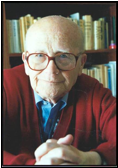
Eduardo Bonnin returned to Canada and spoke to more than two hundred leaders at the First National Encounter, in Kitchener. At the time, most of our Movements felt that they had a good understanding of Cursillo, its mentality and method. There was great shock when we heard Eduardo say the words, “Cursillo has yet to be tried, anywhere in the world.” From his answers to the many questions asked of him, Canadian leaders everywhere began to ponder if we, indeed, understood this Movement in which we worked so hard.
The National Spiritual Advisor at the time, Father Gaston Rioux, was so affected by what he had heard that he undertook a ten week pilgrimage to Mallorca, to discover for himself whether the Cursillo that Eduardo had talked about was really lived in the manner in which he described. He returned to Canada with a new vision which he began to share with the Officers’ Group of the time.
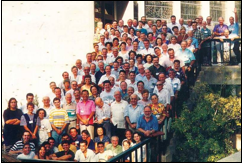
1994 saw the 50th anniversary of the first Cursillo and the Mallorcan leaders came to a momentous decision. In Eduardo’s travels around the globe, he had come to realize that the Charism of the Cursillo was being lost through well meaning adaptations and misunderstanding. To try to address the problem, they called leaders from around the world to Mallorca, to participate in the I Conversations of Cala Figuera. And that is what happened; the leaders conversed with one another, discovering or rediscovering together the Foundational Charism, revealed through the foundational ideas in the ten topics presented. Some Canadian leaders were invited to attend.
At the first national conference held subsequent to their return, they asked the delegates present, to forget for the course of the weekend, all that they knew of Cursillo and to listen with new ears to the message from the I Conversations.
This took place in Chatham, in 1994 and from that point on, Cursillo in Canada began a journey of rediscovery, of recapturing the Foundational Charism and rediscovering the Vision of Cursillo as envisioned by its Founder. CCCC was given an almost unanimous mandate to begin the journey.
Since that time, each and every one of the annual conferences has attempted to bring to the participants the ideas and thinking of the Founder and the Cursillo Movement as it was intended to be lived. In between conferences, CCCC has done all that it can to translate and make available the writings of Eduardo Bonnin and other important documents that provide resource material for the Schools of Leaders across the country. Although it may appear that this information is published very slowly, it must be understood that it is a long and laborious process. The texts are refined and reviewed and edited until they are ready for a final edit in Mallorca. The process for the more complex documents is for us to go to Mallorca and go over every paragraph, sometimes every word with one or other of the Mallorca leaders who is fluent in English. Since beginning the ongoing study of the texts from Mallorca, we have come to realize that much of the misunderstanding of the purpose and strategy of the Movement has come about because of the poor translations of existing documents. We have come to realize that what is vital is to translate not just words but ideas and that is what takes place during the long hours of work in Mallorca.

Canadian leaders have gone on several occasions to spend time with Eduardo Bonnin, asking him questions and seeking the answers to some of the questions that Canadian Cursillistas raise. These trips to Mallorca have provided an additional element to our understanding; we have seen what it is to live the Cursillo as the Mallorcan Cursillistas live it. We have attended their ultreyas, participated in their clausuras, been a part of their School of Leaders, and spent hours in dialogue with many of their leaders.
Eduardo Bonnin returned to Canada on several occasions and, too, Mallorcan leaders such as Miguel and Maria Sureda and Juan Aumatell, have participated as guest speakers at several of the annual conferences.

In 2002, the Mallorca secretariat called Cursillo leaders from around the world to the II Conversations of Cala Figuera where once again we listened to presentations on the essence of Cursillo and its Foundational ideas and conversed together on how to bring the Movement back to its original purpose and intent throughout the world.
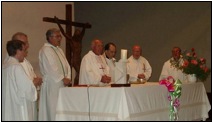
2004 saw a great celebration in Mallorca, the 60th anniversary of the Movement. On the actual date in August, the Cursillistas travelled to Cala Figuera. A commemorative plaque had been attached to a wall outside the chalet ‘Mar y Pins’ which Eduardo unveiled, after which the Cursillistas attended a thanksgiving celebration of the Eucharist where Eduardo addressed the Cursillistas. The mayor of Cala Figuera has promised that one of the plazas in a new development in the town will be called the Plaza Eduardo Bonnin, an acknowledgement of the humble man who received the Charism which has resulted in a worldwide movement and which, incidentally, brings many tourists to Cala Figuera to see where Cursillo began.
The official celebration of the 60th anniversary took place in Palma in November of 2004. Seven hundred people attended, Cursillistas from years gone by, one a candidate from that first Cursillo in Cala Figuera.
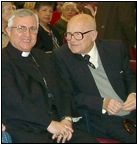
The bishop of Mallorca, Jesus Murgui Soriano, attended and in his remarks praised the Cursillistas for the great work that they had accomplished but cautioned them not to rest on their laurels, to look around and see a world that still needed to hear the same Good News, “God Loves You”.
Eventually, some of the Cursillistas encouraged Eduardo to allow them to begin to archive his letters, notes, and papers, all meticulously kept for more than sixty years. The Eduardo Bonnin Aguiló Foundation, known as FEBA, has been established and gradually the history of Cursillo, from the very beginning, is being compiled. The purpose of the Foundation is to gather, protect and spread the thoughts and work of Eduardo Bonnin Aguiló, or the Cursillo in Christianity Movement.
The Cursillo in Canada is not limited only to the Catholic Church but is lived in many other denominations.
The Officers of the CCCC are committed to working with Mallorca, and now the Eduardo Bonnin Aguilo Foundation, to ensure that the Foundational Charism will not be lost. We, in Canada, will continue to keep the flame alive in this part of the world. The gift of Cursillo, given so long ago to the most humble of men, Eduardo Bonnin, is to share the best news that God loves each of us, by the best means, the means of Friendship.


